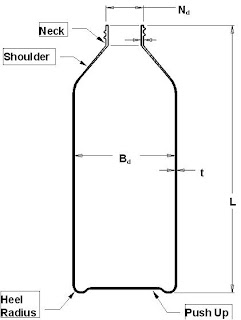Rubber Balls - A Universal Toy
Rubber bouncy balls are small objects, often ball-shaped, made from a flexible material known as rubber. Let's delve into more details about this fascinating material and the production process of rubber balls in this blog post. Of course, we'll also discuss their use as toys.
Polymers and Rubber
Polymers are long chains of molecules made up of repeating units called monomers. Rubber, the primary component of rubber balls, is a natural polymer that can be found in the latex of rubber trees. Synthetic rubbers, such as diene rubbers, including polybutadiene (the most widely used synthetic rubber), and polyisoprene (a more expensive alternative with properties closer to natural rubber), can also be found.
Rubber is known for its unique elasticity and resilience, making it an ideal material for manufacturing rubber balls. Rubber polymer chains consist primarily of monomers containing carbon, hydrogen, and oxygen atoms, linked together in long chains.
The Production Process of Rubber Balls
The production process of rubber balls is generally straightforward and is based on a few fundamental steps:
- Mixing and Shaping: Raw rubber is first mixed with other components, such as sulfur, to create durable bonds between polymer chains. The mixture is then shaped to create the desired structure for the balls.
- Vulcanization: This stage involves heating the rubber in the presence of sulfur, which hardens the rubber. This process enhances the durability and elasticity of the balls, allowing them to bounce without quickly wearing out.
- Molding: The rubber is then molded into small balls of various sizes and colors. They can take on different shapes, such as eggs, diamonds, or dice, which do not bounce vertically and are referred to as "Rubber Gimmicks."
- Testing and Quality Control: Each ball undergoes a quality control process to ensure it meets the appropriate standards of durability and elasticity.
Applications of Rubber Balls
Rubber balls serve as popular toys and exercise tools, finding applications in various aspects of life. Here are some examples of their uses:
- Play and Sports: For children, rubber balls are a source of joy and play. They can be used for jumping, throwing, or organizing various games.
- Exercise and Fitness: Rubber balls are often used in fitness exercises, particularly in jump-rope activities. They help improve physical fitness and endurance.
- Rehabilitation Therapy: For some patients, such as those recovering from injuries or surgeries, jumping on rubber balls can be part of their rehabilitation therapy.
- Art and Crafts: Rubber balls are occasionally used in art and crafts to create unique decorations or decorative elements.
Rubber boucy balls are an excellent example of the application of polymers in everyday life. The flexibility of rubber, as a polymer, enables the creation of resilient and durable items that bring joy to both children and adults. Understanding the production process of rubber balls helps us appreciate the role of polymers in our daily lives and play.




Comments